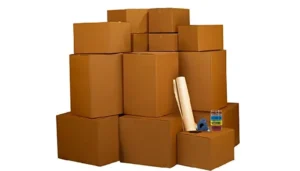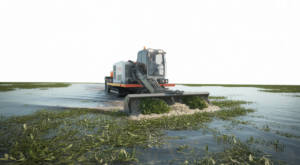The Essential Guide To Choosing Cardboard Boxes For Packing

Choosing the right cardboard boxes for packing involves more than just picking a box off the shelf. It’s about understanding the specific requirements of your items and ensuring the boxes you select meet those needs. The first step is to consider the type of cardboard. Single-wall boxes are suitable for lightweight items, while double-wall or triple-wall boxes offer extra durability for heavier goods. Additionally, the box’s dimensions should match the size of the items to minimize movement and potential damage. Check for quality indicators such as the box’s burst strength and edge crush test (ECT) ratings, which reflect its ability to withstand pressure and rough handling. By carefully evaluating these factors, you can ensure your packing is both effective and secure.
Top Benefits Of Using Cardboard Boxes For Packing
Cardboard boxes provide numerous benefits that make them an ideal choice for packing. Their lightweight nature reduces shipping costs, while their strength and durability protect contents from damage. The ease of cardboard boxes for packing to print logos and important information directly on the boxes enhances brand visibility and provides clear handling instructions. Additionally, cardboard boxes are relatively easy to assemble and close, requiring minimal tools or expertise. Their versatility means they can accommodate a wide range of products, from delicate electronics to bulky household items. These benefits, combined with their cost-effectiveness, make cardboard boxes a preferred option for both personal and commercial packing needs.

How To Properly Use Cardboard Boxes For Packing Fragile Items?
Packing fragile items requires careful attention to detail to ensure their safe transport. Begin by selecting a high-quality cardboard box with sufficient cushioning. Before placing items inside, line the bottom of the box with packing material such as cardboard boxes for packing peanuts, or crumpled paper. Place the fragile items in the center of the box, ensuring they do not touch the sides or each other. Fill any remaining space with additional packing material to prevent movement. Once packed, seal the box securely with strong packing tape. Label the box as “Fragile” and “Handle with Care” to alert handlers to its delicate contents. By following these steps, you enhance the protection of your fragile items during transit.
Choosing The Right Size Of Cardboard Boxes For Packing Needs
Selecting the appropriate size of cardboard boxes is crucial for effective packing. A box that is too large can result in excessive movement and potential damage, while one that is too small may not accommodate the items properly. To determine the right size, measure the dimensions of the items to be packed and select a box that has cardboard boxes for packing using a box with internal dividers or compartments for items that require additional separation. For bulkier items, ensure the box is sturdy enough to support the weight without collapsing. Additionally, avoid overloading boxes, as this can compromise their structural integrity. Proper sizing not only protects your items but also optimizes space and reduces shipping costs.
Eco-Friendly Options: Sustainable Cardboard Boxes For Packing
As environmental awareness grows, many are turning to eco-friendly cardboard boxes for packing. These sustainable options are made from recycled materials and are often biodegradable, reducing their environmental impact. When selecting eco-friendly boxes, look for certifications such as the Forest Stewardship cardboard boxes for packing ensuring responsible sourcing of materials. Some boxes are also designed to be reusable, further extending their lifespan and reducing waste. Additionally, consider using biodegradable packing materials such as cornstarch peanuts or recycled paper. By opting for sustainable packaging solutions, you contribute to environmental conservation while still achieving effective protection for your goods.
Common Mistakes To Avoid When Using Cardboard Boxes For Packing
Effective packing requires attention to detail, and avoiding common mistakes can significantly enhance the protection of your items. One frequent error is using boxes that are not strong enough for the contents, leading to potential breakage or collapse. Another mistake is failing to adequately cushion items inside the box, resulting in cardboard boxes for packing. Overpacking or underpacking boxes can also create issues; overpacking can stress the box and cause it to break while underpacking can lead to insufficient protection. Additionally, neglecting to seal boxes properly can expose contents to moisture and dirt. By avoiding these common mistakes, you ensure a smoother packing process and better protection for your items.
DIY Tips For Reinforcing Cardboard Boxes For Packing Heavier Items
Reinforcing cardboard boxes is essential when packing heavier items to ensure they remain intact during transit. Start by selecting a high-strength box, such as a double-wall or triple-wall option. Reinforce the bottom of the box with extra layers of cardboard or heavy-duty packing tape to support the weight. Adding internal support with corrugated dividers or cardboard boxes for packing the weight evenly and prevent shifting. For added protection, use corner protectors and edge guards. Reinforcing the box with additional layers of tape along the seams and edges can also prevent accidental openings. By implementing these DIY reinforcement techniques, you enhance the durability and safety of your packed items.
The Cost-Effectiveness Of Cardboard Boxes For Packing Compared To Alternatives
Cardboard boxes are often considered a cost-effective option for packing compared to alternatives like plastic or wooden crates. Their affordability stems from the low cost of raw materials and ease of production. Additionally, cardboard boxes are lightweight, which helps reduce shipping costs. Unlike some alternatives, cardboard is readily recyclable, and cardboard boxes for packing disposal costs. While plastic boxes may offer more durability and wooden crates may provide greater protection, they often come at a higher price point. For most packing needs, especially those involving standard goods and less rigorous conditions, cardboard boxes offer a balance of performance and affordability, making them a practical choice for both personal and commercial use.
Conclusion
Cardboard boxes play a pivotal role in the cardboard boxes for packing process, offering a versatile and cost-effective solution for a wide range of needs. From selecting the right type and size of box to ensuring proper packing techniques and exploring eco-friendly options, understanding the intricacies of cardboard boxes can enhance the efficiency and safety of your packing endeavors. Avoiding common mistakes and implementing DIY reinforcement methods can further improve the protection of your items. With their affordability and practicality, cardboard boxes remain a reliable choice for effective packing, making them indispensable in both everyday and specialized packing scenarios. By mastering the use of cardboard boxes, you can achieve optimal results and contribute to a more sustainable packaging practice.







